NEWTON, Sir Isaac (1642-1727). Philosophiae Naturalis Principia Mathematica . London: Joseph Streater, 1687. 4 (246 x 185mm). Errata leaf bound at the end of the first quire, the engraved folding plate bound at p.497 (Nnn1), with final blank. Engraved plate of cometary orbit and numerous woodcut text diagrams. (Dampstained, some spotting, mildew and browning, marginal paper flaw in two leaves.) Contemporary calf panelled in blind (rebacked in brown morocco, repaired), modern half red morocco slipcase. Provenance : Professor G.D.E. Weyer of Kiel, bequeathed to his son: Lieutenant Bruno Weyer (inscription dated 1896); Robert Honeyman IV ('One of the greatest books ever written in the field of scientific literature', autograph notes dated 1929 on front pastedown, red leather booklabel, sale Sotheby's, 10 November 1980, lot 2301, 7000). FIRST EDITION, with 2-line imprint on title, of what is 'generally described as THE GREATEST WORK IN THE HISTORY OF SCIENCE' (PMM). The Principia elucidates the universal physical laws of gravitation and motion which lie behind phenomena described by Newton's predecessors Copernicus, Galilei and Kepler. He establishs the mathematical basis for the motion of bodies in unresisting space, i.e. the law of inertia; the motion of fluids and the effect of friction on bodies moving through fluids; and, most importantly, sets forth the law of universal gravitation and its unifying role in the cosmos. 'For the first time a single mathematical law could explain the motion of objects on earth as well as the phenomena of the heavens. .. . It was this grand conception that produced a general revolution in human thought, equalled perhaps only by that following Darwin's Origin of the Species ' (PMM). The commonly held image of Newton sitting hard at thought under a tree when an apple falling to the ground suddenly enables him to formulate the law of gravity is based on his own later reminiscence: 'the notion of gravitation [came to mind] as he sat in a contemplative mood, [and] was occasioned by the fall of an apple' ( Memoirs , ed. W. Stukeley, p.20, quoted in DSB, p.61). Edmond Halley was instrumental in bringing the Principia to print. Its composition arose from a problem put to Newton by Halley, secretary to the Royal Society, to prove that Kepler's law of planetary motion would cause a planet to move in an ellipse around the sun as a focus. Newton sent his proof to Halley, and, after much urging, enlarged it to become the Principia . Halley also acted as editor and publisher. The printer's copy, written in the hand of Newton's amanuensis Humphrey Newton (no relation), survives and shows corrections in both Halley's and the author's hands. Owing particularly to the researches of A.N.L. Munby and W. Todd, the printing history of the Principia is well-documented. Most interesting are the two states of the title-page, one with 2-line imprint, and one a cancel with 3-line imprint naming the bookseller Samuel Smith each reflecting domestic versus foreign distribution (undertaken by Smith) of the work. Variants in the rest of the text occur which do not appear to indicate priority and which do not correspond to one particular state of the title-page; the present copy agrees with those enumerated in the Norman Library catalogue (p.576). Folios P3 and P4 are in their corrected state, those leaves having been reset and the entire sheet reprinted. Cf. A. Koyr and I.B. Cohen, Isaac Newton's 'Principia' , 2 vols., Cambridge: 1971-2. Babson 10; Horblit 78; Norman 1586 (3-line imprint title); Wing N-1048; PMM 161.
NEWTON, Sir Isaac (1642-1727). Philosophiae Naturalis Principia Mathematica . London: Joseph Streater, 1687. 4 (246 x 185mm). Errata leaf bound at the end of the first quire, the engraved folding plate bound at p.497 (Nnn1), with final blank. Engraved plate of cometary orbit and numerous woodcut text diagrams. (Dampstained, some spotting, mildew and browning, marginal paper flaw in two leaves.) Contemporary calf panelled in blind (rebacked in brown morocco, repaired), modern half red morocco slipcase. Provenance : Professor G.D.E. Weyer of Kiel, bequeathed to his son: Lieutenant Bruno Weyer (inscription dated 1896); Robert Honeyman IV ('One of the greatest books ever written in the field of scientific literature', autograph notes dated 1929 on front pastedown, red leather booklabel, sale Sotheby's, 10 November 1980, lot 2301, 7000). FIRST EDITION, with 2-line imprint on title, of what is 'generally described as THE GREATEST WORK IN THE HISTORY OF SCIENCE' (PMM). The Principia elucidates the universal physical laws of gravitation and motion which lie behind phenomena described by Newton's predecessors Copernicus, Galilei and Kepler. He establishs the mathematical basis for the motion of bodies in unresisting space, i.e. the law of inertia; the motion of fluids and the effect of friction on bodies moving through fluids; and, most importantly, sets forth the law of universal gravitation and its unifying role in the cosmos. 'For the first time a single mathematical law could explain the motion of objects on earth as well as the phenomena of the heavens. .. . It was this grand conception that produced a general revolution in human thought, equalled perhaps only by that following Darwin's Origin of the Species ' (PMM). The commonly held image of Newton sitting hard at thought under a tree when an apple falling to the ground suddenly enables him to formulate the law of gravity is based on his own later reminiscence: 'the notion of gravitation [came to mind] as he sat in a contemplative mood, [and] was occasioned by the fall of an apple' ( Memoirs , ed. W. Stukeley, p.20, quoted in DSB, p.61). Edmond Halley was instrumental in bringing the Principia to print. Its composition arose from a problem put to Newton by Halley, secretary to the Royal Society, to prove that Kepler's law of planetary motion would cause a planet to move in an ellipse around the sun as a focus. Newton sent his proof to Halley, and, after much urging, enlarged it to become the Principia . Halley also acted as editor and publisher. The printer's copy, written in the hand of Newton's amanuensis Humphrey Newton (no relation), survives and shows corrections in both Halley's and the author's hands. Owing particularly to the researches of A.N.L. Munby and W. Todd, the printing history of the Principia is well-documented. Most interesting are the two states of the title-page, one with 2-line imprint, and one a cancel with 3-line imprint naming the bookseller Samuel Smith each reflecting domestic versus foreign distribution (undertaken by Smith) of the work. Variants in the rest of the text occur which do not appear to indicate priority and which do not correspond to one particular state of the title-page; the present copy agrees with those enumerated in the Norman Library catalogue (p.576). Folios P3 and P4 are in their corrected state, those leaves having been reset and the entire sheet reprinted. Cf. A. Koyr and I.B. Cohen, Isaac Newton's 'Principia' , 2 vols., Cambridge: 1971-2. Babson 10; Horblit 78; Norman 1586 (3-line imprint title); Wing N-1048; PMM 161.


.jpg)
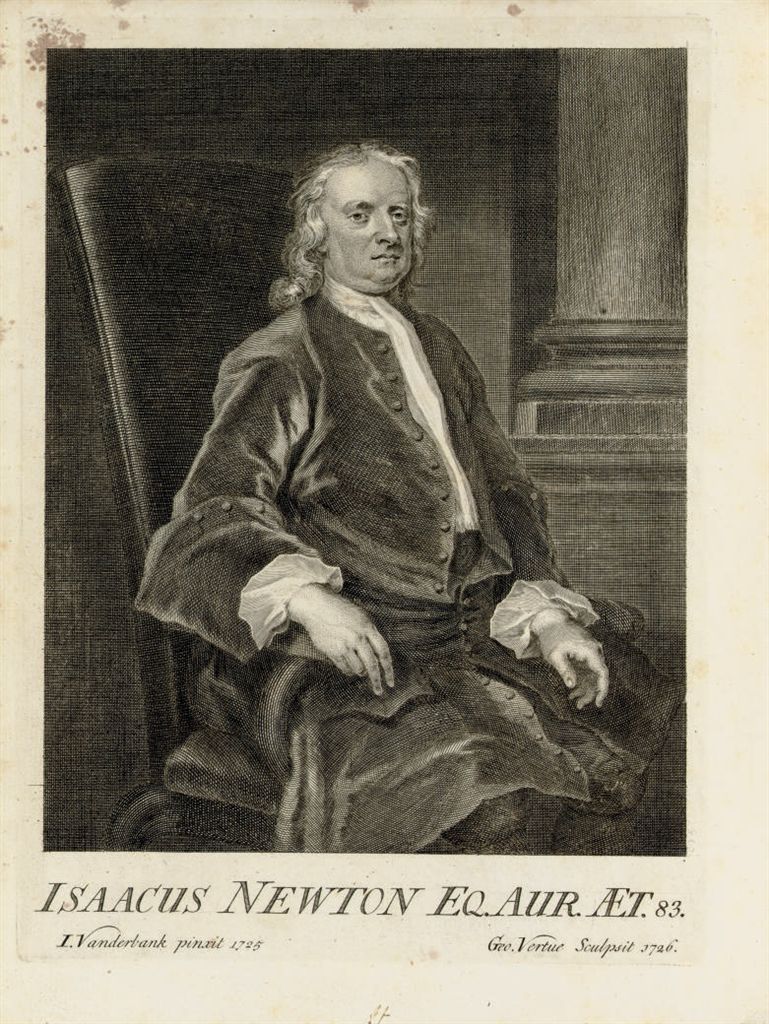
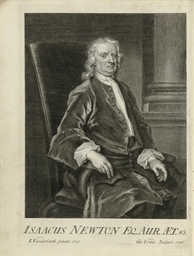
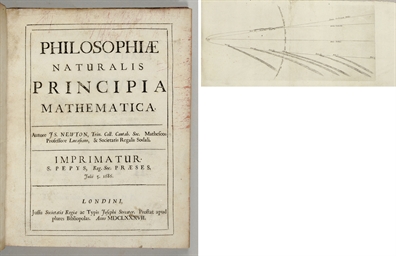


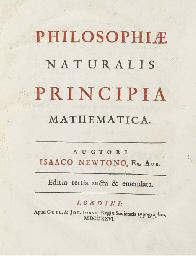
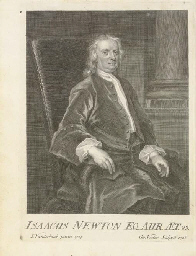



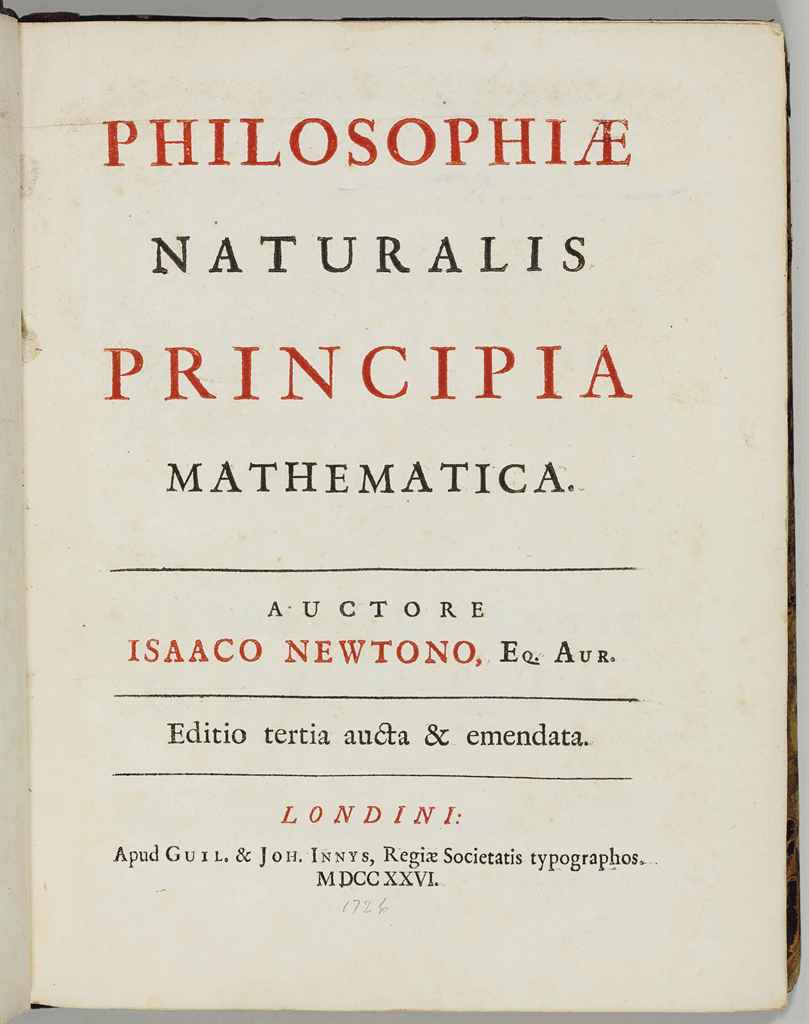
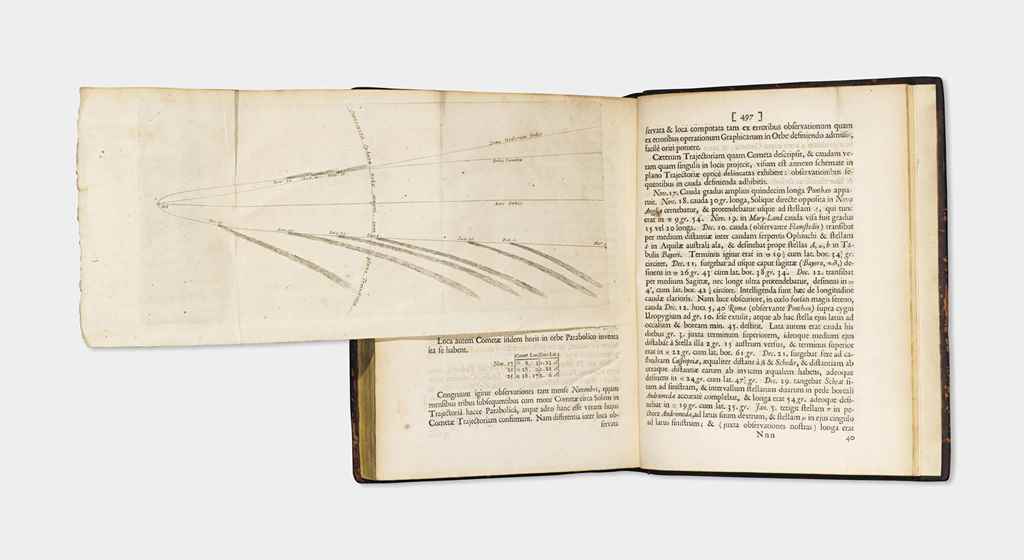
Try LotSearch and its premium features for 7 days - without any costs!
Be notified automatically about new items in upcoming auctions.
Create an alert